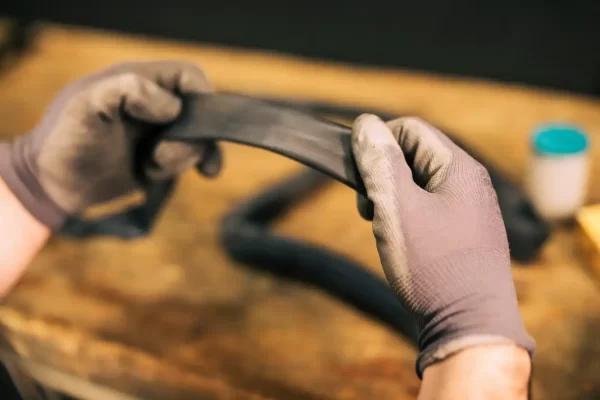The use of proper hand protection is vital for workers in industrial settings across Pakistan. Working gloves serve as a crucial barrier against workplace hazards like sharp edges, heat, chemicals, and more that can lead to serious hand injuries. However, not all gloves offer equal levels of safety and durability.
There is a pressing need for quality standards around working gloves imported and sold in the country to ensure brands meet certain benchmarks around material strength, chemical resistance, dexterity and other key factors. This article will provide a comprehensive overview of considerations around establishing quality metrics and compliance for working gloves used in diverse sectors like manufacturing, construction, oil & gas, and others in Pakistan.
We analyze major government and international standards bodies governing glove certification, variables that influence glove selection, methods for physical testing of safety parameters as well as common issues seen with substandard glove variants. Readers will also find recommendations on effective glove procurement practices for ensuring worker hand protection.
Overview of Working Gloves in Pakistan
Working gloves have been traditionally made from thick leather or cotton fabrics like canvas which provide decent abrasion resistance. These remain commonly used low-cost options across small enterprises in sectors like agriculture, processing units and crafts. However, large-scale industrial expansion in Pakistan has necessitated advanced glove variants using synthetics like Kevlar, nitrile, vinyl or rubber polymer coatings to withstand hazard specifics of unique work environments.
Applications where heat insulation, cut resistance or chemical handling are vital safety factors see heavy usage of specially fabricated glove types. Understanding glove material properties and their efficacy in local working conditions is thus paramount for appropriate hand protection. Establishing proper quality benchmarks through standardized testing provides the foundation of a compliant glove industry catering to unique needs.
Standards Bodies Governing Glove Quality
International standards organizations like ANSI and ISO have comprehensive guidelines around performance criteria and physical properties used for certifying glove variants circling in global trade.
For example, ANSI/ ISEA 105 classifies gloves on a numeric grading system from 0 to 4 indicating the degree of cut, puncture, abrasion and blade slice protection. Materials like Kevlar often achieve the highest Level 4 rating. Similarly, EN 388:2016 adopted in Europe grades abrasion, blade cut, tear and puncture resistance each on a scale of 1 to 4 or 5 denoting better performance.
In Pakistan, the PSQCA (Pakistan Standards and Quality Control Authority) provides national standards aligned with international norms around qualities like chemical, thermal, electrical and mechanical protection capacities. PSQCA product certification through testing in accredited labs is vital for identifying weak quality imports.
Glove selection factors
The glove type deployed for worker hand protection is influenced by multiple interdependent factors:
Work hazards – Gloves need to counter tangible dangers from sharp cutting edges, friction burns, impacts, extreme heat or cold as well as chemical corrosion based on workplace risk assessments. Activities involving handling hazardous substances will need specialized chemical resistant gloves rated for permeation breakthrough times.
Fit and comfort – A secure contoured fit enhances dexterity while breathable, flexible materials prevent sweat buildup and hand fatigue over extended wearing periods.
Allergen potential – Latex sensitivity is a common hand irritant requiring vinyl, nitrile or coated gloves substitutes for vulnerable workers.
Cost economics – While quality remains vital for safety, durability, reuse cycles and cost per use should also be evaluated across alternatives.
Evaluating glove quality
The integrity of physical parameters like tear strength, permeation resistance and amount of coating agent needs to be measured through standardized lab tests before certifying any new batch of gloves entering local markets. Visual examinations check for consistent texture, uniform thickness and surface defects indicating weak structural integrity. Testing themes include:
Cut, puncture and abrasion – Measured on scalpel blade, spike or sandpaper under different forces checking material damage.
Chemical permeability – Monitored for breakthrough detection times when exposed to corrosive substances to rate acid, oil or solvent resistance.
Thermal performance – Observing degradation of key properties under flame impingement, radiant heat or prolonged high temperature. Double palm leather gloves are the best working gloves help in hot weathers.
Dexterity and flexibility – Bench-marking tactile sensitivity, grip control and hand movement freedom through advanced test rigs.
Common issues with substandard gloves
Compromising on safety for cost savings often backfires in case of hand protection gears. Common problems observed with suspicious quality gloves include:
No certification documents – Many local manufacturers skip essential material composition and physical performance reports.
Poor fit – Ill-fitting gloves negatively impact grip control and maneuverability.
Surface cracks or holes – Even minor defects significantly lower tear strength and chemical resistance.
Allergic reactions – Toxic latex proteins or harsh chemical finishes cause major skin irritation issues.
Recommendations for procurement
The consistently rising influx of substandard gloves highlights the need for vigilant sourcing practices:
- Seeking reputable established vendors with verifiable industry credentials helps avoid risky products. Procurement contracts should mandate compliance certificates from accredited labs to verify ratings.
- Requesting samples for trial testing by internal safety teams or third party inspectors provides added validation before large batch orders.
Conclusion
Ensuring high quality standards around proper hand protection lies at the core of every organization’s legal, ethical and financial responsibilities. This necessitates proactive adoption of standardized glove testing norms aligned with government oversight for enabling informed procurement decisions.
Workers too should be educated on selecting the right glove fit and material properties based on exposure risks. With prudent vigilance across the supply chain, quality gaps around working gloves in Pakistan can be effectively bridged.






